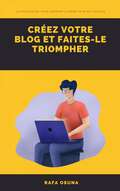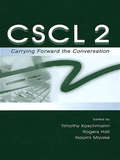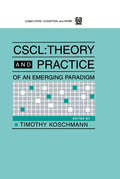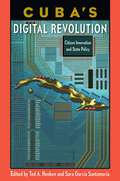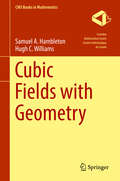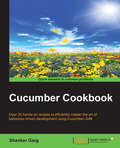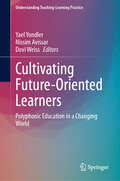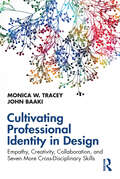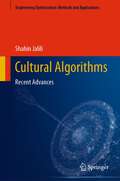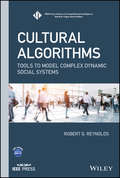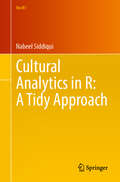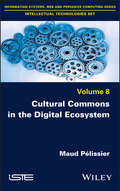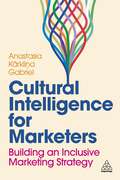- Table View
- List View
Créez votre blog et faites-le triompher: 15 articles qui vous aideront à créer un blog à succès
by Rafa OsunaVous envisagez de créer un blog ou vous en avez déjà un mais vous ne savez pas quoi en faire ? Dans ce cas, ce livre est fait pour vous. Qu'allez-vous trouver dans ce livre ? Bon... mieux, qu'en penses-tu si je commence par vous dire ce que vous ne trouverez pas ? Dans ce livre, vous ne trouverez pas de philosophie bon marché sur les blogs. Le genre que les gens qui n'ont jamais réussi avec un blog essaient de vous vendre. Dans ce livre, vous ne trouverez pas de cours sur la façon de démarrer un blog au niveau technique. Aujourd'hui, les plateformes de blogs sont si intuitives et faciles à utiliser qu'il ne vaut pas la peine de perdre du temps à lire un livre pour cela. Si c'est ce que vous recherchez, je vous conseille l'un des nombreux tutoriels sur le sujet qui se trouvent, par exemple, sur YouTube. Recherche en ligne. Vous n'allez pas non plus trouver dans ce livre des formules magiques pour devenir millionnaire avec votre blog en deux semaines. Croyez-moi, si quelqu'un vous propose quelque chose comme ça, fuyez-le immédiatement. Ce que vous trouverez dans ce livre est un petit résumé de ce que j'ai écrit sur mon blog personnel (El Último Blog) au cours des 10 dernières années. 10 ans durant lesquels j'ai non seulement entretenu mon blog mais dirigé un réseau de blogs avec plus de 50 rédacteurs, j'ai participé à des blogs collaboratifs, j'ai donné des conférences et des cours sur les blogs, j'ai participé à plusieurs livres... Ce que je voulais vous proposer dans ce livre, en guise de synthèse de ces 10 ans de blogging, c'est une sélection de 15 articles qui, je pense, reflètent de manière claire et concise tout ce dont vous avez besoin pour réussir votre blog. Il y a 15 articles que j'ai sélectionnés parmi plus de 2000 que j'ai publiés au cours de ces années. Articles que j'ai retouchés pour publication dans ce livre, afin que, tout en conservant la fraîcheur d'
Cscl 2: Carrying Forward the Conversation
by Timothy Koschmann Naomi Miyake Rogers HallCSCL 2: Carrying Forward the Conversation is a thorough and up-to-date survey of recent developments in Computer Supported Collaborative Learning, one of the fastest growing areas of research in the learning sciences. A follow-up to CSCL: Theory and Practice of an Emerging Paradigm (1996), this volume both documents how the field has grown and fosters a meaningful discussion of how the research program might be advanced in substantive ways. Recognizing the long-standing traditions of CSCL work in Europe and Japan, the editors sought to broaden and expand the conversation both geographically and topically. The 45 participating authors represent a range of disciplinary backgrounds, including anthropology, communication studies, computer science, education, psychology, and philosophy, and offer international perspectives on the field. For each chapter, the goal was not only to show how it connects to past and future work in CSCL, but also how it contributes to the interests of other research communities. Toward this end, the volume features a "conversational structure" consisting of target chapters, invited commentaries, and author responses. The commentaries on each chapter were solicited from a diverse collection of writers, including prominent scholars in anthropology of education, social studies of science, CSCW, argumentation, activity theory, language and social interaction, ecological psychology, and other areas. The volume is divided into three sections: *Part I explores four case studies of technology transfer involving CSILE, one of the most prominent CSCL projects. *Part II focuses on empirical studies of learning in collaborative settings. *Part III describes novel CSCL technologies and the theories underlying their design. Historically, there has been a certain amount of controversy as to what the second "C" in CSCL should represent. The conventional meaning is "collaborative" but there are many C-words that can be seen as relevant. With the publication of this volume, "conversational" might be added to the list and, in this spirit, the book might be viewed as an invitation to join a conversation in progress and to carry it forward.
Cscl: Theory and Practice of An Emerging Paradigm
by Timothy KoschmannThis book, about a newly emerging area of research in instructional technology, has as its title the acronym "CSCL." Initially, CSCL was chosen as an acronym for Computer-Supported Collaborative Learning. However, some would argue that "collaborative" is often not a descriptive term for what learners do in instructional settings; further, as the field develops, the technology used to support collaboration may not always involve computers, at least not in the direct ways they have been used to support instruction in the past. To avoid getting bogged down in this terminological debate, this book uses CSCL as a designation in its own right, leaving open to interpretation precisely what words it stands for. The authors talk a great deal about the theory underlying their work. In part, this is because that is what they were asked to do, but it is also an indication of the state of the field. In an established paradigm in which the theories and methods are well agreed upon, such discussion is less central. CSCL, however, has not yet reached the stage of "normal" science. There is much to be worked out yet. This book is offered with the hope that it will help to define a direction for future work in this field. The chapters appear in alphabetical order (except for the introductory chapter and the afterword) -- not for lack of a better way to organize the chapters, but rather because the organizational possibilities are too numerous and this order does not privilege one over another. By not imposing a topical organizing structure on this collection, it is hoped that readers will feel freer to explore the chapters in a way that best suits their needs. COPY FOR BIND-CARD CD-ROM info ................................. There is an accompanying CD-Rom for this proceedings that will become available September 1998. Purchasers of the proceedings may obtain a copy of this CD-ROM at no cost by contacting Lawrence Erlbaum Associates, Inc. phone: (201) 236-9500 toll-free: 1-800-9-BOOKS-9 (1-800-926-6579) 9am-5pm EST fax: (201) 236-0072 e-mail: orders@erlbaum.com Web site: www.erlbaum.com address: 10 Industrial Avenue, Mahwah, NJ 07430-2262 The CD-ROM was funded through a grant from the National Science Foundation.
Cuba’s Digital Revolution: Citizen Innovation and State Policy (Reframing Media, Technology, and Culture in Latin/o America)
by Ted A. Henken and Sara Garcia SantamariaA wide-ranging examination of the ways digital technologies are impacting Cuba’s Revolutionary project The triumph of the Cuban Revolution gave the Communist Party a monopoly over both politics and the mass media. However, with the subsequent global proliferation of new information and communication technologies, Cuban citizens have become active participants in the worldwide digital revolution. While the Cuban internet has long been characterized by censorship, high costs, slow speeds, and limited access, this volume argues that since 2013, technological developments have allowed for a fundamental reconfiguration of the cultural, economic, social, and political spheres of the Revolutionary project.The essays in this volume cover various transformations within this new digital revolution, examining both government-enabled paid public web access and creative workarounds that Cubans have designed to independently produce, distribute, and access digital content. Contributors trace how media ventures, entrepreneurship, online marketing, journalism, and cultural e-zines have been developing on the island alongside global technological and geopolitical changes.As Cuba continues to expand internet access and as citizens challenge state policies on the speed, breadth, and freedom of that access, Cuba’s Digital Revolution provides a fascinating example of the impact of technology in authoritarian states and transitional democracies. While the streets of Cuba may still belong to Castro’s Revolution, this volume argues that it is still unclear to whom Cuban cyberspace belongs. Contributors: Larry Press | Edel Lima Sarmiento | Olga Khrustaleva | Alexei Padilla Herrera | Eloy Viera Cañive | Marie Laure Geoffray | Ted A. Henken | Sara Garcia Santamaria | Anne Natvig | Carlos Manuel Rodríguez Arechavaleta | Mireya Márquez-Ramírez, Ph.D.| Abel Somohano Fernández | Rebecca Ogden | Jennifer Cearns | Walfrido Dorta | Paloma DuongA volume in the series Reframing Media, Technology, and Culture in Latin/o America, edited by Héctor Fernández L’Hoeste and Juan Carlos RodríguezPublication of the paperback edition made possible by a Sustaining the Humanities through the American Rescue Plan grant from the National Endowment for the Humanities.
Cubic Fields with Geometry (CMS Books in Mathematics)
by Samuel A. Hambleton Hugh C. WilliamsThe objective of this book is to provide tools for solving problems which involve cubic number fields. Many such problems can be considered geometrically; both in terms of the geometry of numbers and geometry of the associated cubic Diophantine equations that are similar in many ways to the Pell equation. With over 50 geometric diagrams, this book includes illustrations of many of these topics. The book may be thought of as a companion reference for those students of algebraic number theory who wish to find more examples, a collection of recent research results on cubic fields, an easy-to-understand source for learning about Voronoi’s unit algorithm and several classical results which are still relevant to the field, and a book which helps bridge a gap in understanding connections between algebraic geometry and number theory.The exposition includes numerous discussions on calculating with cubic fields including simple continued fractions of cubic irrational numbers, arithmetic using integer matrices, ideal class group computations, lattices over cubic fields, construction of cubic fields with a given discriminant, the search for elements of norm 1 of a cubic field with rational parametrization, and Voronoi's algorithm for finding a system of fundamental units. Throughout, the discussions are framed in terms of a binary cubic form that may be used to describe a given cubic field. This unifies the chapters of this book despite the diversity of their number theoretic topics.
Cuckoo Malware Analysis
by Iqbal Muhardianto Digit OktaviantoThis book is a step-by-step, practical tutorial for analyzing and detecting malware and performing digital investigations. This book features clear and concise guidance in an easily accessible format.Cuckoo Malware Analysis is great for anyone who wants to analyze malware through programming, networking, disassembling, forensics, and virtualization. Whether you are new to malware analysis or have some experience, this book will help you get started with Cuckoo Sandbox so you can start analysing malware effectively and efficiently.
Cuckoo Search and Firefly Algorithm: Theory and Applications (Studies in Computational Intelligence #516)
by Xin-She YangNature-inspired algorithms such as cuckoo search and firefly algorithm have become popular and widely used in recent years in many applications. These algorithms are flexible, efficient and easy to implement. New progress has been made in the last few years, and it is timely to summarize the latest developments of cuckoo search and firefly algorithm and their diverse applications. This book will review both theoretical studies and applications with detailed algorithm analysis, implementation and case studies so that readers can benefit most from this book. Application topics are contributed by many leading experts in the field. Topics include cuckoo search, firefly algorithm, algorithm analysis, feature selection, image processing, travelling salesman problem, neural network, GPU optimization, scheduling, queuing, multi-objective manufacturing optimization, semantic web service, shape optimization, and others. This book can serve as an ideal reference for both graduates and researchers in computer science, evolutionary computing, machine learning, computational intelligence, and optimization, as well as engineers in business intelligence, knowledge management and information technology.
Cucumber Cookbook
by Shankar GargThis book is intended for business and development personnel who want to use Cucumber for behavior-driven development and test automation. Readers with some familiarity with Cucumber will find this book of most benefit. Since the main objective of this book is to create test automation frameworks, previous experience in automation will be helpful.
Cucumber Recipes: Automate Anything with BDD Tools and Techniques
by Ian Dees Matt Wynne Aslak HellesoyYou can test just about anything with Cucumber. We certainly have, and in Cucumber Recipes we'll show you how to apply our hard-won field experience to your own projects. Once you've mastered the basics, this book will show you how to get the most out of Cucumber--from specific situations to advanced test-writing advice. With over forty practical recipes, you'll test desktop, web, mobile, and server applications across a variety of platforms. This book gives you tools that you can use today to automate any system that you encounter, and do it well.The Cucumber Book showed you how your team can work together to write executable specifications--documents that tell a clear story and also happen to be working test code. We'll arm you with ready-rolled solutions to real-world problems: your tests will run faster, read more clearly, and work in any environment.Our first tips will help you fit Cucumber into your workflow. Powerful filters will tame tables full of test data, transforming them into the format your application needs. Custom output formatters will generate reports for any occasion. Continuous Integration servers will run your Cucumber tests every time the code changes. Next, you'll find recipes tailored to the platform you're running on. Ever wanted to know how to test a Grails app from Cucumber? Need to put a Windows program through its paces? How about a mobile app running on Android or iOS? We'll show you how to do all of these.Throughout the book, you'll see how to make Cucumber sing as you interoperate with different platforms, languages, and environments. From embedded circuits to Python and PHP web apps, Cucumber has something for you.What You Need:You'll need basic working knowledge of Cucumber and Ruby. Individual recipes may have additional requirements; for example, a recipe on Windows automation might pull in an open source GUI driver.We've written the recipes for compatibility with Ruby 1.9.3 and 1.8.7, plus Cucumber 1.1.4. Other versions may work as well, but these are the ones we test with.
Cult of Analytics: Data analytics for marketing (Emarketing Essentials Ser.)
by Steve JacksonCult of Analytics enables professionals to build an analytics driven culture into their business or organization. Marketers will learn how to turn tried and tested tactics into an actionable plan to change their culture to one that uses web analytics on a day to day basis.Through use of the fictitious ACME PLC case, Steve Jackson provides working examples based on real life situations from the various companies he has worked with, such as Nokia, KONE, Rovio, Amazon, Expert, IKEA, Vodafone, and EMC. These examples will give the reader practical techniques for their own business regardless of size or situation making Cult of Analytics a must have for any would-be digital marketer. This new edition has been thoroughly updated, now including examples out of how to get the best from Google analytics, as well as ways to use social media data, big data, tag management and advanced persona segmentation to drive real value in your organisation. It's also been expanded to include exercises and new cases for students and tutors using the book as a text.
Cult of the Dead Cow: How the Original Hacking Supergroup Might Just Save the World
by Joseph MennThe shocking untold story of the elite secret society of hackers fighting to protect our freedom, &“a hugely important piece of the puzzle for anyone who wants to understand the forces shaping the internet age&” (The New York Times Book Review) Cult of the Dead Cow is the tale of the oldest active, most respected, and most famous American hacking group of all time. With its origins in the earliest days of the internet, the cDc is full of oddball characters – activists, artists, and musicians – some of whom went on to advise presidents, cabinet members, and CEOs, and who now walk the corridors of power in Washington and Silicon Valley. Today, the group and its followers are battling electoral misinformation, making personal data safer, and organizing to keep technology a force for good instead of for surveillance and oppression. Cult of the Dead Cow describes how, at a time when governments, corporations, and criminals hold immense power, a small band of tech iconoclasts is on our side fighting back.
Cultivating Communication in the Classroom: Future-Ready Skills for Secondary Students (Corwin Teaching Essentials)
by Lisa Ann JohnsonBuilding 21st Century communication skills Students are expected to be innovators, creative thinkers, and problem solvers. But what if they can't communicate their ideas persuasively? Knowing how to share ideas is as crucial as the ideas themselves. Unfortunately, many students don’t get explicit opportunities to hone this skill. Cultivating Communication in the Classroom will help educators design authentic learning experiences that allow students to practice their skills. Readers will find: Real world insights into how students will be expected to communicate in their future careers and education Strategies for teaching communication skills throughout the curriculum Communication Catchers for igniting ideas
Cultivating Communication in the Classroom: Future-Ready Skills for Secondary Students (Corwin Teaching Essentials)
by Lisa Ann JohnsonBuilding 21st Century communication skills Students are expected to be innovators, creative thinkers, and problem solvers. But what if they can't communicate their ideas persuasively? Knowing how to share ideas is as crucial as the ideas themselves. Unfortunately, many students don’t get explicit opportunities to hone this skill. Cultivating Communication in the Classroom will help educators design authentic learning experiences that allow students to practice their skills. Readers will find: Real world insights into how students will be expected to communicate in their future careers and education Strategies for teaching communication skills throughout the curriculum Communication Catchers for igniting ideas
Cultivating Future-Oriented Learners: Polyphonic Education in a Changing World (Understanding Teaching-Learning Practice)
by Nissim Avissar Yael Yondler Dovi WeissThe book Cultivating Future-Oriented Learners: Polyphonic Education in a Changing World offers a new theoretical and practical educational approach, responding to our era's challenges. The polyphonic paradigm it proposes uses current educational elements to produce "a new whole" connecting technology, varied learning spaces, humanizing pedagogy, and global values of personal, social, and environmental responsibility. Combining all these elements, the presented polyphonic wisdom model enables teachers to design a technology-enhanced, pluralistic, and dynamic learning environment where individual voices are heard while all the voices harmonize. Centered around human dignity and affinity between the personal and collective good, it aspires to assist educators in cultivating productive and value-based future citizens and teachers within a democratic society. The book introduces thirteen unique teaching models to foster humanizing global values: diversity and inclusion, ecohumanistic responsibility, and a dialogue between diverse stands and perspectives. It guides learners toward attaining their objectives by acquiring independent learning skills. Together, these teaching models are a catalogue of practical implementation choices of the polyphonic wisdom model in various educational frameworks. The envisaged readership encompasses educators and related professionals, but no less so anyone concerned about the current educational crisis who wishes to rethink education, technology, and values such as present and future personal, social, and environmental responsibility.
Cultivating Professional Identity in Design: Empathy, Creativity, Collaboration, and Seven More Cross-Disciplinary Skills
by Monica W. Tracey John BaakiCultivating Professional Identity in Design is a nuanced, comprehensive companion for designers across disciplines honing their identities, self-perception, personal strengths, and essential attributes. Designers’ identities, whether rooted in education, workforce training, digital technology, arts and graphics, built environment, or other fields, are always evolving, influenced by any combination of current mindset, concrete responsibilities, team dynamics, and more. Applicable to designers of all contexts, this inspiring yet rigorous book guides practitioners and students to progress with ten key traits: empathy, uncertainty, creativity, ethics, diversity/equity/inclusion, reflection, learning, communication, collaboration, and decision-making. Though it details a complete journey from start to finish, this book acknowledges the varying paths of designers’ roles and is structured for a flexible, highly iterative reading experience. Segments can be read individually or out of order and revisited for new insights. Current and future stages of development – education experience, early-career opportunities, mid-career accomplishments, and/or career transitions – are factored in without hierarchy. Specific takeaways, activities, and reflection exercises are intended to work across settings and levels of experience. Design hopefuls and experts alike will find a new way to participate in and persevere through their work.
Cultivating Professional Identity in Design: Empathy, Creativity, Collaboration, and Seven More Cross-Disciplinary Skills
by Monica W. Tracey John BaakiCultivating Professional Identity in Design is a nuanced, comprehensive companion for designers across disciplines honing their identities, self-perception, personal strengths, and essential attributes. Designers’ identities, whether rooted in education, workforce training, digital technology, arts and graphics, built environment, or other fields, are always evolving, influenced by any combination of current mindset, concrete responsibilities, team dynamics, and more. Applicable to designers of all contexts, this inspiring yet rigorous book guides practitioners and students to progress with ten key traits: empathy, uncertainty, creativity, ethics, diversity/equity/inclusion, reflection, learning, communication, collaboration, and decision-making.Though it details a complete journey from start to finish, this book acknowledges the varying paths of designers’ roles and is structured for a flexible, highly iterative reading experience. Segments can be read individually or out of order and revisited for new insights. Current and future stages of development – education experience, early-career opportunities, mid-career accomplishments, and/or career transitions – are factored in without hierarchy. Specific takeaways, activities, and reflection exercises are intended to work across settings and levels of experience. Design hopefuls and experts alike will find a new way to participate in and persevere through their work.
Cultural Algorithms: Recent Advances (Engineering Optimization: Methods and Applications)
by Shahin JaliliThis book covers the latest advances in Cultural Algorithms, their general framework, different variants, hybridized versions with other meta-heuristic and search techniques, and their applications. Cultural Algorithms are meta-heuristic numerical optimization techniques inspired by the bio-cultural evolutionary theory, in which both types of vertical and horizontal learning behaviors are modeled. The book includes well-briefed basics of optimization and theoretical backgrounds of Cultural Algorithms in its initial chapters and then discusses their applications in different branches of science and engineering. It provides detailed mathematical formulations and algorithmic pseudo-codes of hybridized, extended, and multi-population variants of cultural algorithms. The book will serve the research students, fellows, professors, and industry professionals to implement real-time applications of Cultural Algorithms.
Cultural Algorithms: Tools to Model Complex Dynamic Social Systems (IEEE Press Series on Computational Intelligence)
by Robert G. ReynoldsA thorough look at how societies can use cultural algorithms to understand human social evolution For those working in computational intelligence, developing an understanding of how cultural algorithms and social intelligence form the essential framework for the evolution of human social interaction is essential. This book, Cultural Algorithms: Tools to Model Complex Dynamic Social Systems, is the foundation of that study. It showcases how we can use cultural algorithms to organize social structures and develop socio-political systems that work. For such a vast topic, the text covers everything from the history of the development of cultural algorithms and the basic framework with which it was organized. Readers will also learn how other nature-inspired algorithms can be expressed and how to use social metrics to assess the performance of various algorithms. In addition to these topics, the book covers topics including: ● The CAT system including the Repast Simphony System and CAT Sample Runs ● How to problem solve using social networks in cultural algorithms with auctions ● Understanding Common Value Action to enhance Social Knowledge Distribution Systems ● Case studies on team formations ● An exploration of virtual worlds using cultural algorithms For industry professionals or new students, Cultural Algorithms provides an impactful and thorough look at both social intelligence and how human social evolution translates into the modern world.
Cultural Analytics
by Lev ManovichA book at the intersection of data science and media studies, presenting concepts and methods for computational analysis of cultural data.How can we see a billion images? What analytical methods can we bring to bear on the astonishing scale of digital culture--the billions of photographs shared on social media every day, the hundreds of millions of songs created by twenty million musicians on Soundcloud, the content of four billion Pinterest boards? In Cultural Analytics, Lev Manovich presents concepts and methods for computational analysis of cultural data. Drawing on more than a decade of research and projects from his own lab, Manovich offers a gentle, nontechnical introduction to the core ideas of data analytics and discusses the ways that our society uses data and algorithms.
Cultural Analytics in R: A Tidy Approach (Use R!)
by Nabeel SiddiquiThis book offers an introduction to computational analysis for humanities scholars and researchers, systematically bridging traditional inquiry with the data-intensive capabilities of the R programming language. Employing diverse cultural datasets about gaming, film, literature, and music, it emphasizes the need to structure data, particularly through the &‘tidy data&’ paradigm, as a foundational practice for efficient analysis. Beginning with the fundamentals of R, the book progresses through sophisticated analytical techniques, including text mining, sentiment analysis, network analysis, and machine learning, all contextualized with rich cultural examples. In doing so, it demystifies complex computational procedures, empowering readers to apply these tools to critical cultural research and fostering a new generation of data-literate humanists equipped to navigate and interpret the increasingly digital cultural record.
Cultural Commons in the Digital Ecosystem
by Maud PelissierINTELLECTUAL TECHNOLOGIES SET Coordinated by Jean-Max Noyer and Maryse CarmesThe dynamics of production, circulation and dissemination of knowledge that are currently developing in the digital ecosystem testify to a profound change in capitalism. On the margins of the traditional duo of knowledge markets and exclusive property rights, the emerging notion of cultural commons is opening the door to new modes of production based on hybrid market arrangements and an inclusive understanding of property.This book studies the political economy of cultural commons in the digital ecosystem, outlining the contexts and areas of thought in which this concept has emerged and identifying the socio-economic, technical and political issues associated with it. It also analyzes the specific physical conditions that enable the implementation of the economy of cultural commons in a specific digital ecosystem, that of books, by studying the effects of digital libraries and self-publishing platforms.
Cultural Data Science: An Introduction to R (Quantitative Methods in the Humanities and Social Sciences)
by Harald KlinkeThis book addresses growing demand in the visual humanities for foundational knowledge in data analysis, image processing, and artificial intelligence. Intended for readers without prior technical knowledge, its eighteen chapters introduce key concepts in data science through examples from art history, visual computing, and cloud technologies. For advanced readers, it explores how digital methods enhance our understanding of our cultural past. Focusing on image-based humanities research, the book demonstrates practical applications using open source software such as R, RStudio, and ImageMagick, along with open data sets from institutions like the MoMA, the Met, and the Rijksmuseum. Ideal for students, researchers, and professionals in art history, digital humanities, and museum studies, this book bridges the gap between technology and the humanities, making complex digital methods accessible to a broad audience.
Cultural Intelligence for Marketers: Building an Inclusive Marketing Strategy
by Anastasia Karklina GabrielBrands not only reflect culture but actively shape societal norms and values. Move beyond performative inclusive marketing and drive the cultural conversation.A brand today can build a marketing strategy that not only effectively resonates with audiences but also meaningfully impacts society at large. Learn how to produce inclusive marketing using an approach grounded in critical perspectives on society and the impact brands wield in shaping it. In this book, cultural theorist and strategist Anastasia Karklina Gabriel draws on social analysis, media theory, and semiotics to help marketers improve cultural fluency and future-proof brand strategy by embedding equity and inclusion into every aspect of marketing. Cultural Intelligence for Marketers explains how to create an inclusive marketing strategy using an actionable approach that draws on advanced insights into culture, identity, representation, and the power of media in driving social change.The book offers an in-depth dive into the urgent need for cultural competence in marketing using a framework rooted in 4Cs: Culture, communication, critical consciousness, and community. It delves into practical aspects of conscious marketing, inclusive innovation, cultural insights, brand activism, social impact, and responsibility in business. It features insights from current and former marketing leaders at Wieden+Kennedy, Mindshare, Dentsu, and Saatchi & Saatchi, among others. Drawing on case studies from brands that are actively pursuing inclusive marketing strategies, including Microsoft, Pinterest, Billie, and REI, Gabriel outlines the process of deploying cultural intelligence to attain commercial advantage while transforming society for the better.
Cultural Netizenship: Social Media, Popular Culture, and Performance in Nigeria
by James YékúHow does social media activism in Nigeria intersect with online popular forms—from GIFs to memes to videos—and become shaped by the repressive postcolonial state that propels resistance to dominant articulations of power? James Yékú proposes the concept of "cultural netizenship"—internet citizenship and its aesthetico-cultural dimensions—as a way of being on the social web and articulating counter-hegemonic self-presentations through viral popular images. Yékú explores the cultural politics of protest selfies, Nollywood-derived memes and GIFs, hashtags, and political cartoons as visual texts for postcolonial studies, and he examines how digital subjects in Nigeria, a nation with one of the most vibrant digital spheres in Africa, deconstruct state power through performed popular culture on social media. As a rubric for the new digital genres of popular and visual expressions on social media, cultural netizenship indexes the digital everyday through the affordances of the participatory web.A fascinating look at the intersection of social media and popular culture performance, Cultural Netizenship reveals the logic of remediation that is central to both the internet's remix culture and the generative materialism of African popular arts.
Cultural Perspectives in Video Game Audio
by Mohammad R. AzadehfarCultural Perspectives in Video Game Audio explores the fundamental role of sound – specifically sound effects, music, and voice acting – in video games. This book provides readers with a deeper understanding of the impact of sound on gameplay and storytelling and examines sound’s potential to either preserve or diminish cultural diversity.Organised into six chapters, this book examines various aspects of audio and its cultural implications, offering readers insights into the vital role sound plays in video game design and player experience from a new perspective. It delves into a wide range of topics, including natural soundscapes; the interplay between human activities and their environments; linguistic elements which express cultural identity; the role of non-verbal audio in video games; musical preferences and structures; and the use of sound symbols as expressions of cultural identity.Cultural Perspectives in Video Game Audio is a valuable resource for researchers and students in fields such as sound design, game studies, and media studies, as well as sound anthropologists and ethnomusicologists. It will also be of interest to game sound designers and developers seeking to create more culturally authentic soundscapes for their audiences.
